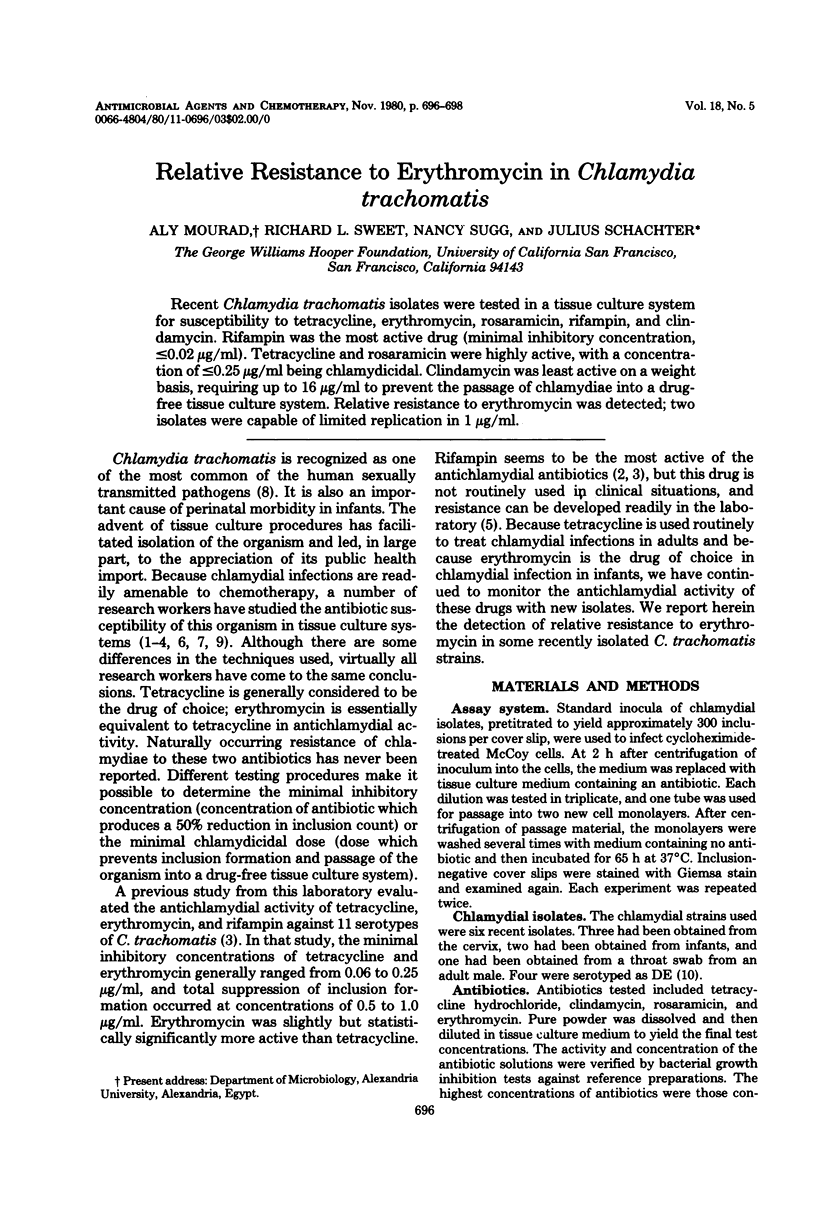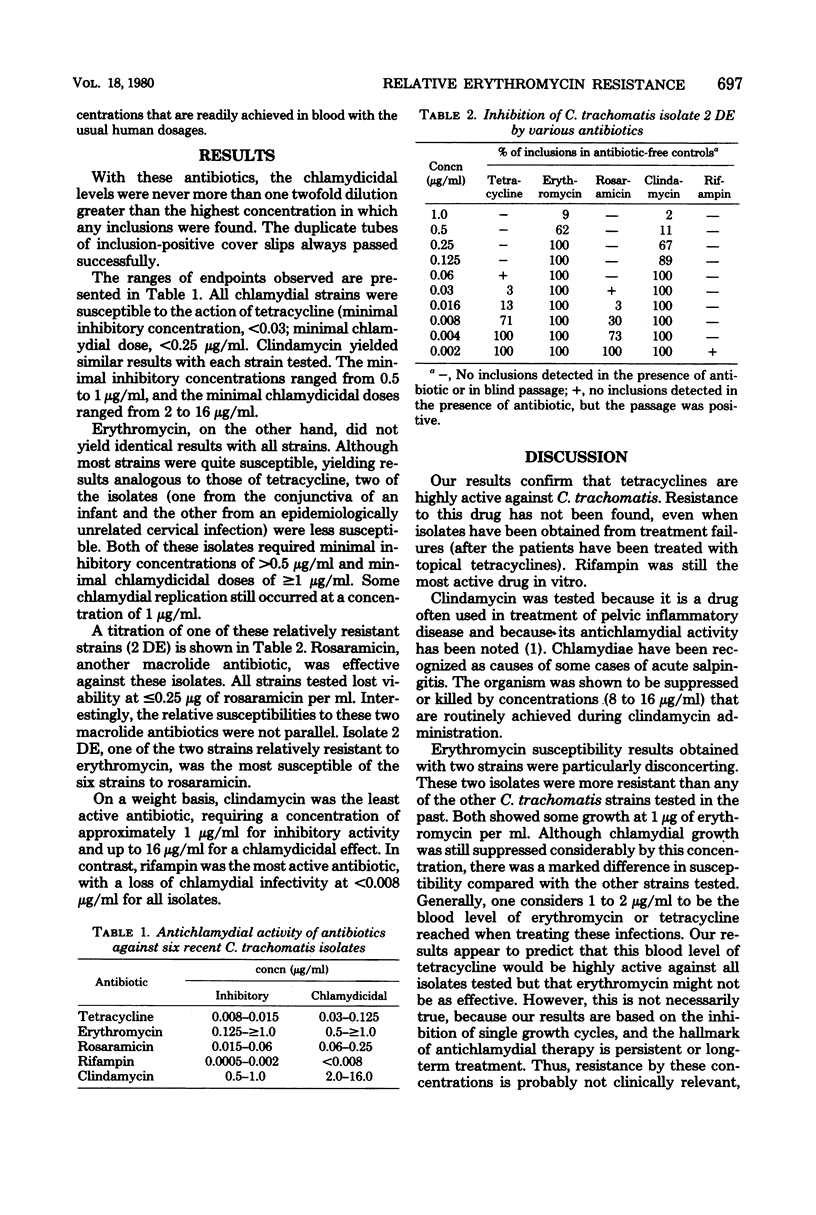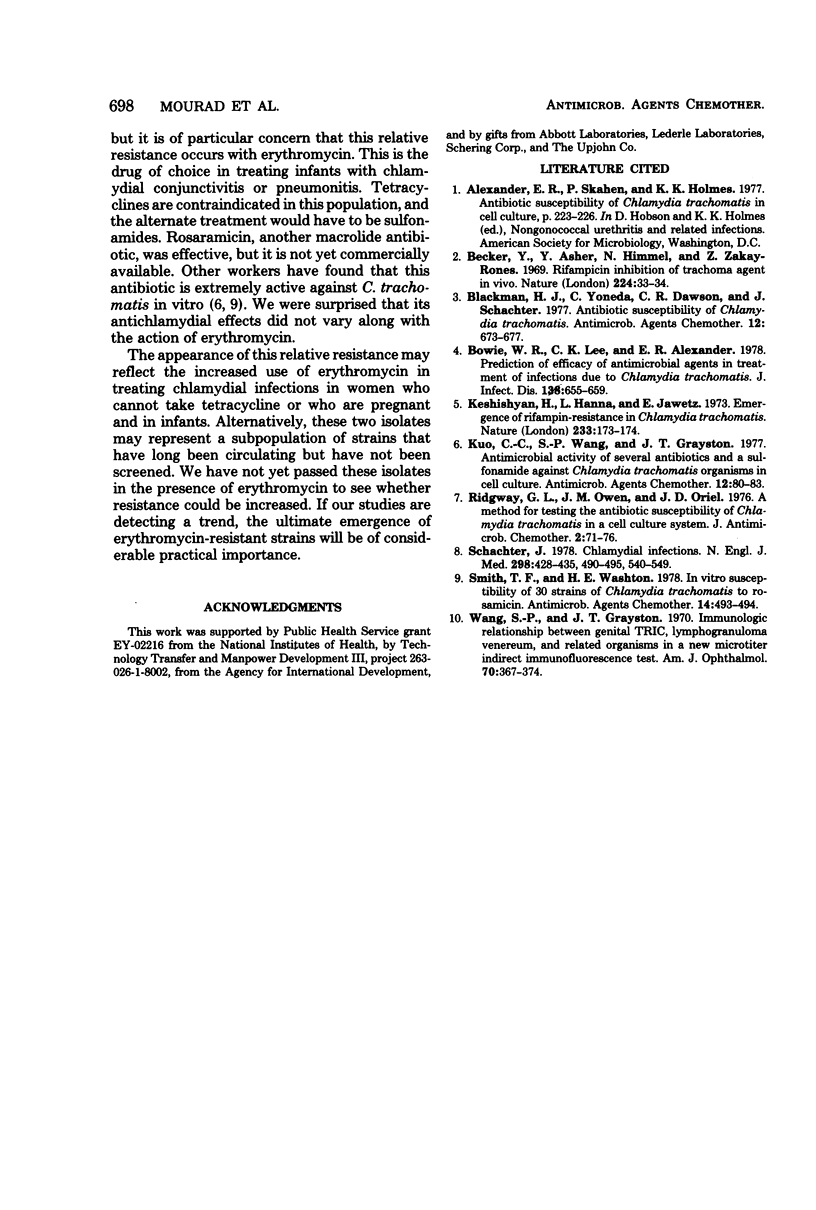Abstract
Recent Chlamydia trachomatis isolates were tested in a tissue culture system for susceptibility to tetracycline, erythromycin, rosaramicin, rifampin, and clindamycin. Rifampin was the most active drug (minimal inhibitory concentration, less than or equal to 0.02 microgram/ml). Tetracycline and rasaramicin were highly active, with a concentration of less than or equal to 0.25 microgram/ml being chlamydicidal. Clindamycin was least active on a weight basis, requiring up to 16 microgram/ml to prevent the passage of chlamydiae into a drug-free tissue culture system. Relative resistance to erythromycin was detected; two isolates were capable of limited replication in 1 microgram/ml.
Full text
PDF


Selected References
These references are in PubMed. This may not be the complete list of references from this article.
- Becker Y., Asher Y., Himmel N., Zakay-Rones Z., Maythar B. Rifapicin inhibition of trachoma agent in vivo. Nature. 1969 Oct 4;224(5214):33–34. doi: 10.1038/224033a0. [DOI] [PubMed] [Google Scholar]
- Blackman H. J., Yoneda C., Dawson C. R., Schachter J. Antibiotic susceptibility of Chlamydia trachomatis. Antimicrob Agents Chemother. 1977 Dec;12(6):673–677. doi: 10.1128/aac.12.6.673. [DOI] [PMC free article] [PubMed] [Google Scholar]
- Bowie W. R., Lee C. K., Alexander E. R. Prediction of efficacy of antimicrobial agents in treatment of infections due to Chlamydia trachomatis. J Infect Dis. 1978 Nov;138(5):655–659. doi: 10.1093/infdis/138.5.655. [DOI] [PubMed] [Google Scholar]
- Keshishyan H., Hanna L., Jawetz E. Emergence of rifampin-resistance in Chlamydia trachomatis. Nature. 1973 Jul 20;244(5412):173–174. doi: 10.1038/244173a0. [DOI] [PubMed] [Google Scholar]
- Kuo C. C., Wang S. P., Grayston J. T. Antimicrobial activity of several antibiotics and a sulfonamide against Chlamydia trachomatis organisms in cell culture. Antimicrob Agents Chemother. 1977 Jul;12(1):80–83. doi: 10.1128/aac.12.1.80. [DOI] [PMC free article] [PubMed] [Google Scholar]
- Ridgway G. L., Owen J. M., Oriel J. D. A method for testing the antibiotic susceptibility of Chlamydia trachomatis in a cell culture system. J Antimicrob Chemother. 1976 Mar;2(1):71–76. doi: 10.1093/jac/2.1.71. [DOI] [PubMed] [Google Scholar]
- Schachter J. Chlamydial infections (third of three parts). N Engl J Med. 1978 Mar 9;298(10):540–549. doi: 10.1056/NEJM197803092981005. [DOI] [PubMed] [Google Scholar]
- Smith T. F., Washton H. E. In vitro susceptibility of 30 strains of Chlamydia trachomatis to rosamicin. Antimicrob Agents Chemother. 1978 Sep;14(3):493–494. doi: 10.1128/aac.14.3.493. [DOI] [PMC free article] [PubMed] [Google Scholar]
- Wang S. P., Grayston J. T. Immunologic relationship between genital TRIC, lymphogranuloma venereum, and related organisms in a new microtiter indirect immunofluorescence test. Am J Ophthalmol. 1970 Sep;70(3):367–374. doi: 10.1016/0002-9394(70)90096-6. [DOI] [PubMed] [Google Scholar]


